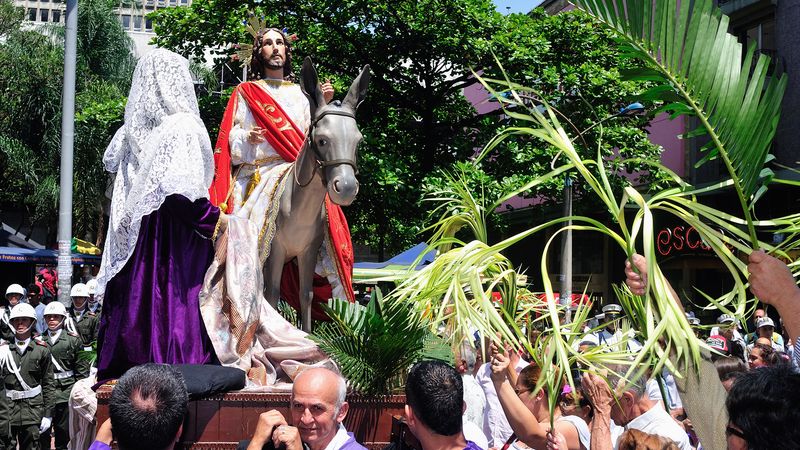Easter, the quintessential celebration of resurrection and renewal among Christians, is entwined with a complex interplay of astronomical phenomena and liturgical conventions. The date of Easter is not fixed, leading to fascinating inquiries about the earliest possible celebration of this sacred holiday. The determination of Easter’s date draws upon both celestial mechanics and the calendar developed by early Christian leaders. To comprehend when Easter can occur, one must traverse both the scientific and the theological, exploring how these realms converge to affirm a deeper spiritual meaning.
Historically, the timing of Easter is rooted in the Jewish Passover, which is pivotal in the biblical narrative of Christ’s crucifixion and resurrection. Since the New Testament accounts link these events, the Church adopted the practice of celebrating Easter following Passover. This is paramount as it underscores the theological significance of resurrection—a pivotal tenet that reflects the triumph over sin and death. However, the variance in the Jewish calendar, which is lunisolar, combined with the solar calendar adopted by most of the Western world, introduces complexities in calculating Easter’s date.
Moreover, the Council of Nicaea, convened in 325 AD, established a robust framework for determining Easter’s date. The Nicene formula dictates that Easter is celebrated on the first Sunday subsequent to the first full moon after the vernal equinox, which is fixed on March 21st. This formula effectively means that Easter can be observed as early as March 22nd and as late as April 25th. Remarkably, the interplay between lunar cycles and solar calendars highlights humanity’s enduring quest to reconcile observable nature with sacred time.
In essence, the earliest possible date for Easter, March 22nd, is more than a mere numerical coincidence; it represents the ancient effort to harmonize the rhythms of nature with spiritual observance. This alignment prompts one to consider how celestial events can influence human behaviors, beliefs, and even the very fabric of worship. The cultivation of such an understanding invites one to contemplate the dimensions of time, as viewed through the lens of faith.
However, this way of calculating Easter is not uniform across all Christian denominations. The Eastern Orthodox Church, for instance, adheres to the Julian calendar, which results in differing dates for Easter celebrations. This divergence can often lead to a two-week discrepancy between the Western Easter and the Eastern Orthodox Easter, spawning a rich tapestry of traditions and practices that coexist within the Christian faith. The inquiry into these differing methodologies prompts intrigue and reflection on unity amid diversity.
From an astronomical perspective, the lunar cycle emerges as an essential determinant in the ecclesiastical ramifications of Easter’s timing. The Church’s adoption of the Paschal Full Moon, contrasting the astronomical full moon, represents an ancient understanding of the interplay between celestial phenomena and their earthly implications. Each year, following meticulous calculations, the Church ascribes significance to the timing of lunar phases, culminating in this pivotal moment of celebration.
In a more astute interpretation, the earliest Easter also symbolizes a deeper spiritual truth—one of readiness and anticipation. The faithful are called to prepare their hearts and minds long before the arrival of Easter Sunday. This idea resonates profoundly within the Lenten season, a period of penitence and reflection that extends across 40 days leading to Easter. The relationship between astronomical events and spiritual preparation can enhance one’s understanding of the significance of this pivotal Christian liturgical observance.
As society navigates a world deeply influenced by science and logic, the observance of Easter challenges the adherents of the faith to envisage their beliefs through multidimensional lenses. For instance, the act of celebrating a day dictated by celestial calculations opens a discourse on how modernity and tradition can coexist. Can the advancements in technology and astronomy augment the religious experience of millions? Furthermore, such contemplation nourishes one’s understanding of time—both cyclical and linear—as it relates to divine promise.
Furthermore, delving into the liturgical year, it becomes evident that Easter is not merely a single act of remembrance; it instigates an entire season dedicated to the themes of renewal, hope, and resurrection. The liturgical calendar vibrant with a series of feasts and observances reflects the centrality of Easter in Christian worship, marking the transition from the solemnity of Lent to the exuberance of the Easter season. This progression encapsulates a microcosm of Christian doctrine, detailing how the inception of life, albeit marked by suffering and sacrifice, blossoms into the promise of resurrection and eternal life.
As one considers these astronomical and liturgical frameworks, it is vital to approach the subject with curiosity and reverence. The journey of understanding Easter is both scholarly and profoundly personal. What does it mean for an individual to recognize the convergence of earthly and divine time? In a world increasingly disconnected from tradition, the exploration of such questions becomes essential, fostering a more profound connection to ancient practices and theological significance.
In conclusion, the earliest date for Easter—March 22nd—serves as not just a numerical benchmark etched in time, but as an intricate web of celestial, historical, and spiritual meaning. The confluence of astronomical phenomena and liturgical rule invites believers to rethink their relationship with the cyclical nature of faith, reminding them of the promise of renewal. It is a subtle call to look beyond the confines of routine understanding, engaging with the essence of what it means to celebrate resurrection and life anew.



